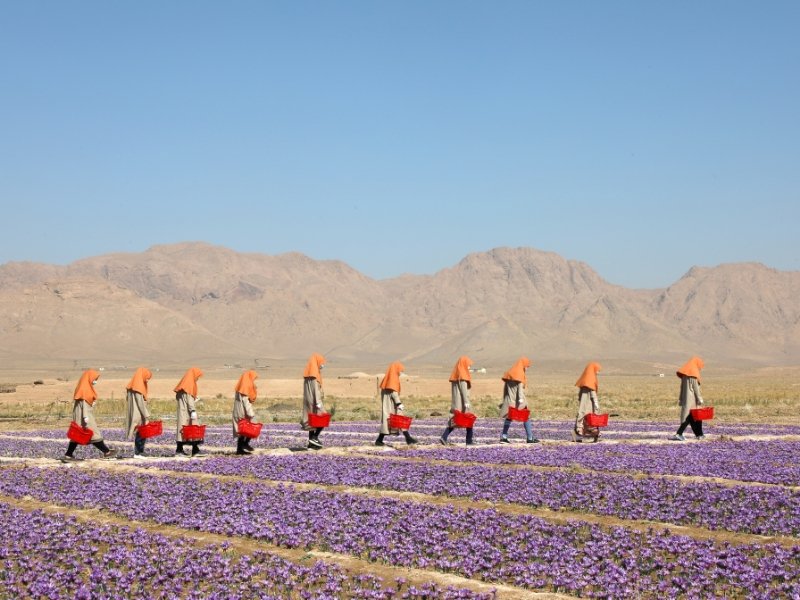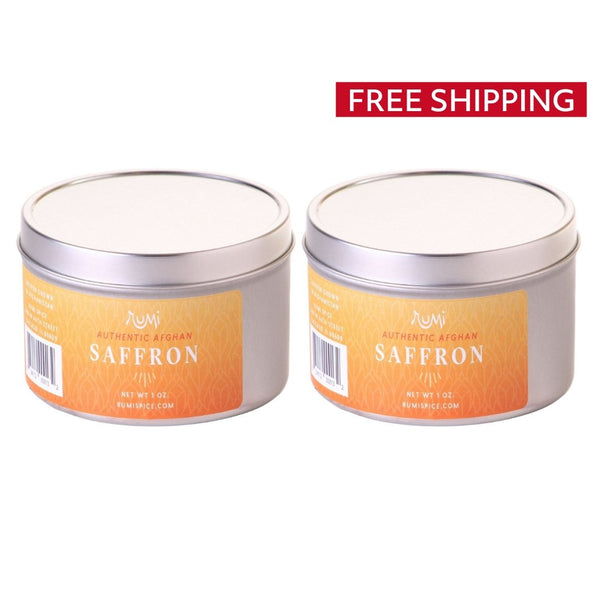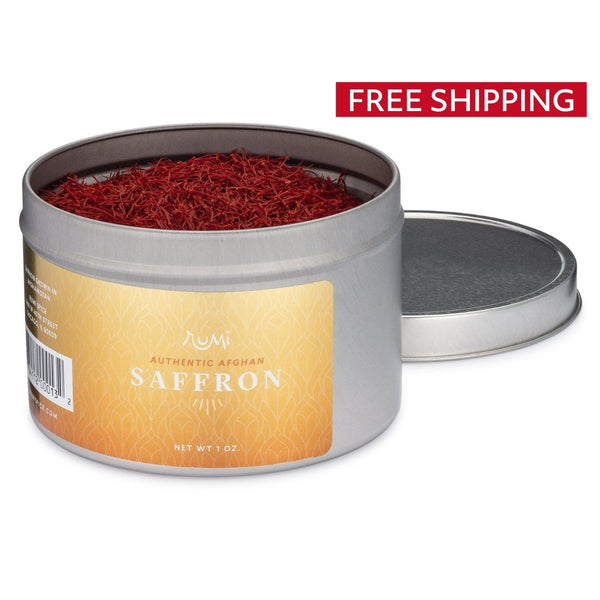An entire village of workers awaits in anticipation - ready for the sight of first bloom in the vast saffron fields outside Herat, Afghanistan. Once the lilac-colored petals open and reveal precious ruby threads, it unleashes a frenzy of activity over the next 25 days to harvest and process the precious saffron spice.
Read on to learn how a buried corm of the saffron crocus transforms into the fragrant Rumi Spice saffron enjoyed for its floral scent and complex flavor imbued into dishes.

Although the saffron harvest season, October and November, are the busiest months, this growing cycle started several years ago when farmers planted the saffron corms.
The corms - think of a ginger root - are what the leaves, stems, and eventually, flowers will grow out of. They are also how saffron propagates as it does not reproduce with bees and saffron seeds. Instead, they develop "daughter" corms after the end of harvest, which eventually split off.

Our partner Afghan saffron farmers pay careful attention to detail on the depth and spacing of the corms. Plant them too deep, and they will freeze during a cold winter. If planted too shallow, they will burn up in the hot summer months. Farmers hone their skills over time by observing the region's climate and learning how to adapt to what nature throws at them.
Saffron cultivation excels under full sunlight in regions with well-draining soil and dry, windy summers. Suppose you took a red marker and connected the saffron growing nations on a globe. You will see a saffron band, including notable producers Iran, Kashmir, Spain, and Afghanistan. All of these regions share climates ideal for high-quality saffron.

The exact timing of the harvest varies each year based on weather and growing conditions. This year the region experienced early spring snow and rain, naturally irrigating the fields, and a mild summer, which resulted in a beautiful first bloom on October 6.

Baskets of purple flowers arrive at the processing center in Herat City. Women skillfully separate red stigmas (three per flower) from the petals by hand - their hands slowly dyed yellow over the day. One hundred fifty flowers are needed for just 1 gram of saffron. This time and labor-intensive process, concentrated within a 48-hour window, explains why saffron is so expensive.

The women in this facility take great pride in the quality of the saffron that flows through there. Many have worked hard, long hours to acquire the skills to harvest and oversee premium Afghan saffron production.
At the end of harvest, farmers and producers gather together to celebrate the successful harvest. Farmers display a sampling of the year's crop and field questions from other farmers interested in starting saffron fields of their own.

This gathering is also an excellent opportunity for producers and farmers to share and learn from each other. Everyone understands that sharing ideas and techniques helps bolster the value of their saffron around the world. This attitude has led to the consistent recognition of Afghan saffron as one of the world's best in quality.
We are so grateful to you. Each spice you purchase enables Rumi Spice to bring more farmers into our network, share more technical training, and hire more women to create economic opportunities as populous as the purple flowers that dot the Afghan fields every fall harvest.




